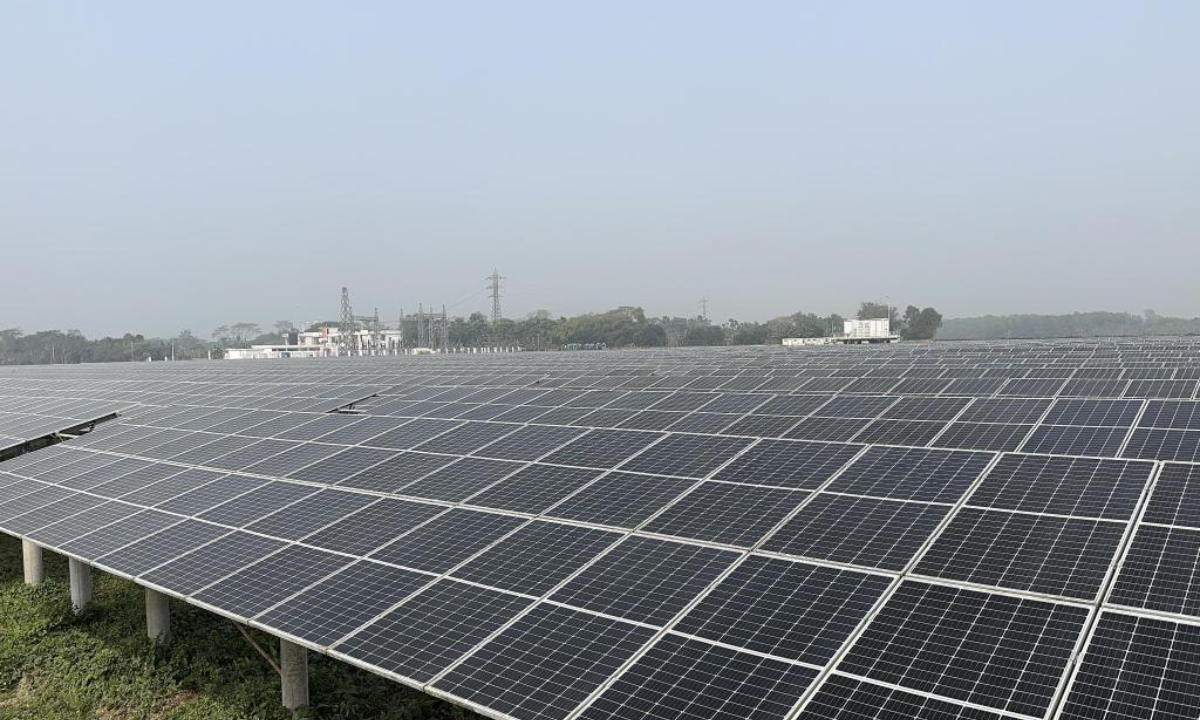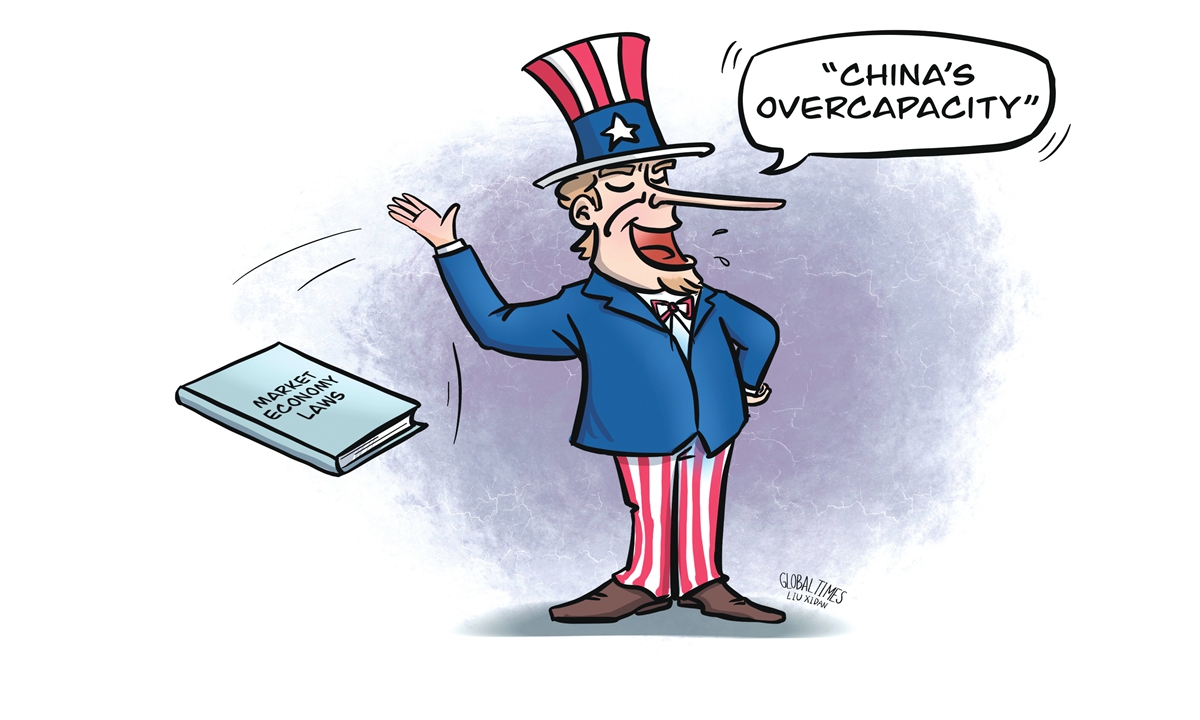China’s green capacity brings opportunities for developing countries’ industrialization


This photo taken on Feb. 17, 2024 shows a 50 MW Chinese-built photovoltaic power plant in Mymensingh District, Bangladesh. Photo:Xinhua

Photo: Courtesy of Vaqar Ahmed
China has emerged as a global leader in the production of green and new-energy products, marking a significant milestone in its economic transformation. With exports of new-energy vehicles (NEVs), solar cells and lithium-ion battery products surpassing the 1 trillion yuan (138 billion) mark in 2023, the country has positioned itself at the forefront of the green industry revolution. This growth in emerging industries not only reflects China's commitment to sustainability but also presents numerous opportunities for developing countries seeking to accelerate their industrialization and participate in the global energy transition.The expansion of China's green industries exhibits the country's strategic vision and attention to innovation across all productive sectors. This growth is fueled by a combination of factors, including government support, technological advancements, regional and global trade, and a conducive domestic business environment. China's proactive investment in research and development, alongside its focus on scaling up production capacity, has enabled it to achieve economies of scale and drive down production costs. Additionally, the commitment to sustainable development goals has spurred investments in renewable energy infrastructure, further catalyzing the growth of green industries.
Key to China's success in forming competitiveness in these emerging industries is its integrated approach to technology, manufacturing and market development. By leveraging its vast manufacturing capabilities, skilled workforce and extensive supply chain networks, China has been able to rapidly scale up production and meet the growing demand for green products both domestically and internationally. Moreover, the proactive policies have stimulated market demand and encouraged innovation in green technologies.
The increasing demand for green industry and new-energy products during the energy transition presents potential for growth, both for China and the global economy. As countries worldwide seek to reduce carbon emissions and transition to renewable energy sources, the demand for clean energy technologies is expected to soar. This trend is being driven by a combination of environmental concerns, regulatory incentives and technological advancements. As such, there is a growing opportunity for countries to capitalize on the burgeoning green market and position themselves as leaders in sustainable development.
In this context, the prospects of cooperation between China and other countries, particularly its neighbor - Pakistan, in the green and new-energy industries are promising. Pakistan, like many developing countries, faces challenges in meeting its energy needs while addressing environmental concerns. By partnering with China, a global leader in green technology and manufacturing, Pakistan can access state-of-the-art solutions and expertise to accelerate its transition to clean energy. Collaboration in areas such as renewable energy infrastructure, electric vehicle deployment and battery storage systems can not only enhance Pakistan's energy security but also drive economic growth and job creation.
China's contribution to the global energy transition and sustainable development extends beyond its borders. By offering cost-effective green products to countries like Pakistan, China is playing a pivotal role in promoting access to clean energy technologies and facilitating the adoption of sustainable practices worldwide. Through initiatives such as the Belt and Road Initiative (BRI), the country is actively supporting infrastructure development and capacity-building efforts in partner countries, thereby promoting green growth and environmental sustainability on a global scale.
Despite China's commendable efforts to promote green industries and sustainable development, it faces increasing protectionism and accusations of "overcapacity" in the international arena. Critics argue that China's rapid expansion of green manufacturing capacity has led to oversupply in certain markets, undermining the competitiveness of domestic industries in other countries. However, such accusations overlook the broader benefits of China's green capacity, including job creation, technological innovation and environmental protection. Moreover, addressing global challenges such as climate change, requires collective action and cooperation among countries, rather than protectionist measures that stifle innovation and impede progress. This is where strengthening of multilateral trade regime holds immense importance.
Looking ahead, China's trade partners, particularly in the Global South, should position their industrial and trade policies in a manner which can utilize the benefits of China's green development, for example, by strengthening policy frameworks to incentivize investment in renewable energy, promoting public-private partnerships to drive innovation and investment, investing in education and training to build human capital in green technologies, facilitating technology transfer and knowledge sharing with China, addressing regulatory barriers to entry for green businesses, promoting green finance mechanisms to attract investment, and harnessing international cooperation initiatives such as the BRI to access funding, technology and expertise. Through these strategic actions, developing economies can accelerate their transition to a low-carbon milieu, achieve sustainable development objectives and pave the way for a more environmentally sustainable future.
The author is a Pakistani economist. bizopinion@globaltimes.com.cn



